Saturday, 08 January 2022
08:30 - 16:00 (EST)
TUT-1: 6G Networks: Beyond Shannon Towards Semantic and Goal-oriented Communications
08:30 - 12:00 (EST)
TUT-2: Public Blockchain: Theoretical Foundation and Applications
TUT-3: Towards Global Connectivity Using Aerial and Space Networks
12:30 - 16:00 (EST)
TUT-4: MetaEverything: Intelligent Meta-Surface Aided Sensing and Communications
TUT-5: Physical Assurance of Electronics for Communications & Networking
Tuesday, 11 January 2022
10:00 - 17:30 (EST)
TUT-6: Reconfigurable Intelligent Surfaces for Future Wireless Communications
10:00 - 13:30 (EST)
TUT-7: 6G Security and Privacy Vision Towards Reality
TUT-8: Distributionally Robust Optimization and Machine Learning for Communication Networks
14:00 - 17:30 (EST)
TUT-9: Understanding 6G Research & Design Aspects for Ultra-Flexible 6G Core Network Architectures
TUT-1: 6G Networks: Beyond Shannon Towards Semantic and Goal-oriented Communications
Date: Saturday, 08 January 2022
Time: 08:30 - 16:00 (EST)
Abstract: The tutorial will first briefly present and motivate the 6G vision, KPIs and key enabling technologies. The tutorial will introduce then the attendees to the current vision on 6G services and use cases, presenting in details the new semantic services. The tutorial will detail on the opportunities offered by - and their related challenges - the pervasive introduction of artificial intelligence and the incorporation of new technologies, like sub-THz or Visible Light Communications (VLC), Reconfigurable Intelligent Surfaces, in a truly 3-dimensional (3D) coverage framework, incorporating terrestrial and aerial radio access points to bring cloud functionalities where and when needed on demand. A specific focus will be given to ‘the intelligence at the edge’ and the intertwining of natural and artificial intelligence.
In a second part of the tutorial, the lecturer will present a radical new vision to go beyond the Shannon mantra thanks to Semantic and Goal-Oriented Communications. In this part of the tutorial it will be discussed on specific application examples for AI interactions and knowledge sharing.
Then, tutorial will discuss on how 6G semantic networks can bring semantic learning mechanisms at the edge of the network and, at the same time, semantic learning can help 6G networks to improve their efficiency and sustainability.
The tutorial will end presenting very recent results (part still unpublished), opening interactive discussion on the extraordinary opportunities that Goal Oriented Wireless Semantic Communications will offer to 6G systems.
Special emphasis will be given to 6G open research challenges that researchers and industry are and will investigate in the near future.
Presenter:
Emilio Calvanese Strinati
 Dr. Emilio Calvanese Strinati obtained his Engineering Master degree in 2001 from the University of Rome ‘La Sapienza’ and his Ph.D in Engineering Science in 2005. He then started working at Motorola Labs in Paris in 2002. Then in 2006 he joint CEA/LETI as a research engineer. From 2007, he becomes a PhD supervisor. From 2010 to 2012, Dr. Calvanese Strinati has been the co-chair of the wireless working group in GreenTouch Initiative which deals with design of future energy efficient communication networks. From 2011 to 2016 he was the Smart Devices & Telecommunications European collaborative strategic programs Director. Between December 2016 and January 2020 is was the Smart Devices & Telecommunications Scientific and Innovation Director. Since February 2020 he is the Nanotechnologies and Wireless for 6G (New-6G) Program Director focusing on future 6G technologies. In December 2013 he has been elected as one of the five representative of academia and research center in the Net!Works 5G PPP ETP. From 2017 to 2018 he was one of the three moderators of the 5G future network expert group. Between 2016 and 2018 he was the coordinator of the H2020 joint Europe and South Korea 5GCHAMPION project that showcased at the 2018 winter Olympic Games, 5G technologies in realistic operational environments. Since July 2018 he is the coordinator of the H2020 joint Europe and South Korea 5G-AllStar project. Since 2018 he holds the French Research Director Habilitation (HDR). In 2021 he started the coordination of the H2020 European project RISE-6G, focusing on the design and operation of Reconfigurable Intelligent Surfaces in future high frequency 6G networks. Since February 2021 he is also the director of the New-6G (Nano Electronic & Wireless for 6G) initiative , dedicated to the required convergence between microelectronic & telecom, hardware & software, network & equipment for upcoming 6G technologies.
Dr. Emilio Calvanese Strinati obtained his Engineering Master degree in 2001 from the University of Rome ‘La Sapienza’ and his Ph.D in Engineering Science in 2005. He then started working at Motorola Labs in Paris in 2002. Then in 2006 he joint CEA/LETI as a research engineer. From 2007, he becomes a PhD supervisor. From 2010 to 2012, Dr. Calvanese Strinati has been the co-chair of the wireless working group in GreenTouch Initiative which deals with design of future energy efficient communication networks. From 2011 to 2016 he was the Smart Devices & Telecommunications European collaborative strategic programs Director. Between December 2016 and January 2020 is was the Smart Devices & Telecommunications Scientific and Innovation Director. Since February 2020 he is the Nanotechnologies and Wireless for 6G (New-6G) Program Director focusing on future 6G technologies. In December 2013 he has been elected as one of the five representative of academia and research center in the Net!Works 5G PPP ETP. From 2017 to 2018 he was one of the three moderators of the 5G future network expert group. Between 2016 and 2018 he was the coordinator of the H2020 joint Europe and South Korea 5GCHAMPION project that showcased at the 2018 winter Olympic Games, 5G technologies in realistic operational environments. Since July 2018 he is the coordinator of the H2020 joint Europe and South Korea 5G-AllStar project. Since 2018 he holds the French Research Director Habilitation (HDR). In 2021 he started the coordination of the H2020 European project RISE-6G, focusing on the design and operation of Reconfigurable Intelligent Surfaces in future high frequency 6G networks. Since February 2021 he is also the director of the New-6G (Nano Electronic & Wireless for 6G) initiative , dedicated to the required convergence between microelectronic & telecom, hardware & software, network & equipment for upcoming 6G technologies.
E. Calvanese Strinati has published around 150 papers in international conferences, journals and books chapters, given more than 200 international invited talks, keynotes and tutorials. He is the main inventor or co-inventor of more than 75 patents. He has organized more than 100 international conferences, workshops, panels and special sessions on green communications, heterogeneous networks and cloud computing hosted in international conferences as IEEE GLOBCOM, IEEE PIMRC, IEEE WCNC, IEEE ICC, IEEE VTC, EuCnC, IFIP, EUCNC and European Wireless. He is the general chair of EUCNC 2022.
TUT-2: Public Blockchain: Theoretical Foundation and Applications
Date: Saturday, 08 January 2022
Time: 08:30 - 12:00 (EST)
Abstract:
Main Content: There are many misunderstandings on what the blockchain technology. The primary objective of this tutorial is to inform the audience exactly what the blockchain technology is, including its theoretical foundation, its benefits to various applications, how the blockchain has been used in practice. Hence, this tutorial is structure into three parts accordingly. In the first part, decentralized consensus is discussed. Decentralized consensus is the most important innovation brought by Bitcoin, the first public blockchain. Decentralized consensus forms the theoretical foundation for public blockchain. Decentralized consensus is drastically different from traditional distributed consensus, and it truly defines the public blockchain technology. More specifically, this part will introduce a general model for decentralized consensus. The Proof of Work and various Proof of Stake consensus approaches will be examined with respect to this model. A critique on other Proof-of-X approaches will be provided. The second part of this tutorial elaborate the characteristics of the blockchain technology, i.e., exactly what benefits the blockchain technology could bring to a system and what limitations the technology current has. For example, when we say the blockchain is immutable, what exactly does it mean? The third part of this tutorial covers various blockchain-enabled applications. These applications will be examined specifically on what blockchain benefits have been used.
Educational Goal: This tutorial will enable participants to gain correct understanding of the blockchain technology, and learn the set of benefits the blockchain offers and its limitations.
Presenter:
Wenbing Zhao
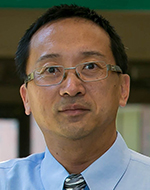 Dr. Zhao is a Full Professor at the Department of Electrical Engineering and Computer Science, Cleveland State University (CSU). He earned his Ph.D. at University of California, Santa Barbara, under the supervision of Drs. Moser and Melliar-Smith, in 2002. Dr. Zhao has been doing research on distributed systems since 1998. His research was sponsored by various US federal and state agencies, including the US National Science Foundation, the US Department of Energy, the US Department of Transportation, the Ohio Bureau of Workers’ Compensation, the Ohio Department of Higher Education, and the Ohio Development Services Agency. Dr. Zhao currently has an active research grant with Department of Energy on using blockchain technology to secure IoT sensing and data processing for power plants. Dr. Zhao has over 220 peer-reviewed publications. Specifically, he authored a research monograph (as single author) titled From Traditional Fault Tolerance to Blockchain published jointly by Wiley-Scrivener in May 2021.
Dr. Zhao is a Full Professor at the Department of Electrical Engineering and Computer Science, Cleveland State University (CSU). He earned his Ph.D. at University of California, Santa Barbara, under the supervision of Drs. Moser and Melliar-Smith, in 2002. Dr. Zhao has been doing research on distributed systems since 1998. His research was sponsored by various US federal and state agencies, including the US National Science Foundation, the US Department of Energy, the US Department of Transportation, the Ohio Bureau of Workers’ Compensation, the Ohio Department of Higher Education, and the Ohio Development Services Agency. Dr. Zhao currently has an active research grant with Department of Energy on using blockchain technology to secure IoT sensing and data processing for power plants. Dr. Zhao has over 220 peer-reviewed publications. Specifically, he authored a research monograph (as single author) titled From Traditional Fault Tolerance to Blockchain published jointly by Wiley-Scrivener in May 2021.
Dr. Zhao has served on several research panels for the US National Science Foundation. Furthermore, he has served as the Keynote Speaker, Tutorial Speaker, General Chair or Program Chair for several international conferences, and has served as a member of the technical program committee for many IEEE conferences. In recent years, Dr. Zhao has been working on blockchain consensus and the integration of blockchain in various applications. BlockSocial has a page for Dr. Zhao at https://www.blocksocial.com/people/wenbing-zhao/. Dr. Zhao’s full CV can be seen at: http://academic.csuohio.edu/zhao_w/WenbingZhao-CV.pdf).
TUT-3: Towards Global Connectivity Using Aerial and Space Networks
Date: Saturday, 08 January 2022
Time: 08:30 - 12:00 (EST)
Abstract: The United Nations (UN) has defined a set of sustainable development goals (SDGs) targeted for 2030 that include ending poverty, hunger, and inequalities, establishing high quality of education and medical services, to name a few. Achieving such goals requires advancement in many industries, which includes the internet and communication technology (ICT) sector. In particular, establishing high quality internet service provides opportunities to stimulate economy in poor communities, access to remote learning, access to digital records and remote patient monitoring, and help farmers improve productivity. In this context, and as the standardization of the fifth generation (5G) of wireless communication systems (WCSs) has been completed, and 5G networks are in their early stage of deployment, the research visioning and planning of the sixth generation (6G) of WCSs are being initiated. However, it is well-known that urbanized regions have been the major beneficiaries of the advances in the previous generations of WCSs. Hence, it is important to carry research with the focus on ensuring digital inclusion of rural and remote areas, which currently lack stable access to internet connectivity. In this talk, we focus on (i) possible network architectures to establish backhaul connectivity in rural and remote areas, with emphasis on satellite-based solutions, (ii) current challenges facing internet access in rural areas, (iii) possible solutions to enhance internet access in rural areas, with emphasis on drone-based architectures, and (iv) existing solutions to improve the flight duration of drones and ensure stable coverage in rural areas.
Presenters:
Mustafa Kishk
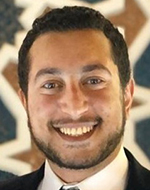 Mustafa A. Kishk received the B.Sc. and M.Sc. degrees from Cairo University, Giza, Egypt, in 2013 and 2015, respectively, and the Ph.D. degree from Virginia Tech, Blacksburg, VA, USA, in 2018. He is a Postdoctoral Research Fellow with the Communication Theory Laboratory, King Abdullah University of Science and Technology, Thuwal, Saudi Arabia. His current research interests include stochastic geometry, energy harvesting wireless networks, UAV-enabled communication systems, and satellite communications.
Mustafa A. Kishk received the B.Sc. and M.Sc. degrees from Cairo University, Giza, Egypt, in 2013 and 2015, respectively, and the Ph.D. degree from Virginia Tech, Blacksburg, VA, USA, in 2018. He is a Postdoctoral Research Fellow with the Communication Theory Laboratory, King Abdullah University of Science and Technology, Thuwal, Saudi Arabia. His current research interests include stochastic geometry, energy harvesting wireless networks, UAV-enabled communication systems, and satellite communications.
Mohamed-Slim Alouni
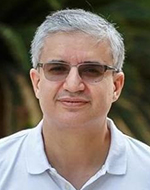 Mohamed-Slim Alouini was born in Tunis, Tunisia. He received the Ph.D. degree in Electrical Engineering from the California Institute of Technology (Caltech) in 1998. He served as a faculty member at the University of Minnesota then in the Texas A&M University at Qatar before joining in 2009 the King Abdullah University of Science and Technology (KAUST) where he is now a Distinguished Professor of Electrical and Computer Engineering. Prof. Alouini is a Fellow of the IEEE and of the OSA. He is currently particularly interested in addressing the technical challenges associated with the uneven distribution, access to, and use of information and communication technologies in far-flung, rural, low-density populations, low-income, and/or hard-to-reach areas.
Mohamed-Slim Alouini was born in Tunis, Tunisia. He received the Ph.D. degree in Electrical Engineering from the California Institute of Technology (Caltech) in 1998. He served as a faculty member at the University of Minnesota then in the Texas A&M University at Qatar before joining in 2009 the King Abdullah University of Science and Technology (KAUST) where he is now a Distinguished Professor of Electrical and Computer Engineering. Prof. Alouini is a Fellow of the IEEE and of the OSA. He is currently particularly interested in addressing the technical challenges associated with the uneven distribution, access to, and use of information and communication technologies in far-flung, rural, low-density populations, low-income, and/or hard-to-reach areas.
TUT-4: MetaEverything: Intelligent Meta-Surface Aided Sensing and Communications
Date: Saturday, 08 January 2022
Time: 12:30 - 16:00 (EST)
Abstract: The future wireless networks are exhibiting a trend towards the intelligent communication and sensing system to support a variety of applications requiring high data rates, low hardware cost, and fine-resolution sensing. Fortunately, with the recent development of new materials, reconfigurable intelligent meta-surface provides an efficient approach to reshape and control the electromagnetic characteristics of the environment, which can be utilized to enhance the performance of communication and sensing. In this tutorial, we will first provide a general introduction of the intelligent meta-surface along with state-of-the-art research in different areas. We then introduce the unique features of intelligent meta-surface which enlighten its broad applications to communication and sensing, in a comprehensive way. Related design, analysis, optimization, and signal processing techniques will be presented. Typical meta-surface based applications for both cellular communications and radio-frequency sensing as well as localization will be explored. The implementation issues along with our developed prototypes and experiments will also be discussed. Formalized analysis of several up-to-date challenges and technical details on system design will be provided for different applications.
Presenters:
Hongliang Zhang
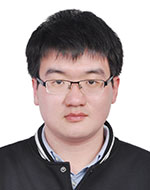 Hongliang Zhang (S’15-M’19) received the B.S. and Ph.D. degrees at the School of Electrical Engineering and Computer Science at Peking University, in 2014 and 2019, respectively. Currently, he is a Postdoctoral Associate in the Department of Electrical and Computer Engineering at Princeton University, New Jersey. His current research interest includes reconfigurable intelligent surfaces, aerial access networks, optimization theory, and game theory. He received the best doctoral thesis award from Chinese Institute of Electronics in 2019. He is an exemplary reviewer for IEEE Transactions on Communications in 2020. He is also the recipient of 2021 IEEE Comsoc Heinrich Hertz Award for Best Communications Letters. He has served as a TPC Member for many IEEE conferences, such as Globecom, ICC, and WCNC. He is currently an Editor for IET Communications and Frontiers in Signal Processing. He also serves as a Guest Editor for IEEE IoT-J special issue on Internet of UAVs over Cellular Networks.
Hongliang Zhang (S’15-M’19) received the B.S. and Ph.D. degrees at the School of Electrical Engineering and Computer Science at Peking University, in 2014 and 2019, respectively. Currently, he is a Postdoctoral Associate in the Department of Electrical and Computer Engineering at Princeton University, New Jersey. His current research interest includes reconfigurable intelligent surfaces, aerial access networks, optimization theory, and game theory. He received the best doctoral thesis award from Chinese Institute of Electronics in 2019. He is an exemplary reviewer for IEEE Transactions on Communications in 2020. He is also the recipient of 2021 IEEE Comsoc Heinrich Hertz Award for Best Communications Letters. He has served as a TPC Member for many IEEE conferences, such as Globecom, ICC, and WCNC. He is currently an Editor for IET Communications and Frontiers in Signal Processing. He also serves as a Guest Editor for IEEE IoT-J special issue on Internet of UAVs over Cellular Networks.
Boya Di
 Boya Di (S’17-M’19) received the B.S. degree from Peking University in 2014, and the Ph.D. degree from Peking University in 2019. She was a post-doctoral research associate in Imperial College London, London, UK and now she works as an assistant professor at Peking University, China. Her main research interests include reconfigurable intelligent surfaces, multi-antenna systems, wireless resource allocation and management, edge computing, and optimization theory. She has published over 13 peer-reviewed papers on meta-surface aided sensing and communications. She received the best doctoral thesis award from Chinese Education Society of Electronics in 2019. She is currently an Editor for IEEE Transactions on Vehicular Technology. She has also served as a reviewer for multiple IEEE journals including IEEE JSAC, TWC, TVT, TCOM, etc., and a TPC member for IEEE GLOBECOM and ICC several times.
Boya Di (S’17-M’19) received the B.S. degree from Peking University in 2014, and the Ph.D. degree from Peking University in 2019. She was a post-doctoral research associate in Imperial College London, London, UK and now she works as an assistant professor at Peking University, China. Her main research interests include reconfigurable intelligent surfaces, multi-antenna systems, wireless resource allocation and management, edge computing, and optimization theory. She has published over 13 peer-reviewed papers on meta-surface aided sensing and communications. She received the best doctoral thesis award from Chinese Education Society of Electronics in 2019. She is currently an Editor for IEEE Transactions on Vehicular Technology. She has also served as a reviewer for multiple IEEE journals including IEEE JSAC, TWC, TVT, TCOM, etc., and a TPC member for IEEE GLOBECOM and ICC several times.
Zhu Han
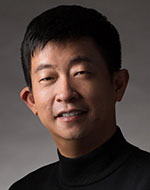 Zhu Han (S’01–M’04-SM’09-F’14) received the B.S. degree in electronic engineering from Tsinghua University, in 1997, and the M.S. and Ph.D. degrees in electrical engineering from the University of Maryland, College Park, in 1999 and 2003, respectively. From 2000 to 2002, he was an R&D Engineer of JDSU, Germantown, Maryland. From 2003 to 2006, he was a Research Associate at the University of Maryland. From 2006 to 2008, he was an assistant professor in Boise State University, Idaho. Currently, he is a Professor in Electrical and Computer Engineering Department as well as Computer Science Department at the University of Houston, Texas. His research interests include wireless resource allocation and management, wireless communications and networking, game theory, wireless multimedia, security, and smart grid communication.
Zhu Han (S’01–M’04-SM’09-F’14) received the B.S. degree in electronic engineering from Tsinghua University, in 1997, and the M.S. and Ph.D. degrees in electrical engineering from the University of Maryland, College Park, in 1999 and 2003, respectively. From 2000 to 2002, he was an R&D Engineer of JDSU, Germantown, Maryland. From 2003 to 2006, he was a Research Associate at the University of Maryland. From 2006 to 2008, he was an assistant professor in Boise State University, Idaho. Currently, he is a Professor in Electrical and Computer Engineering Department as well as Computer Science Department at the University of Houston, Texas. His research interests include wireless resource allocation and management, wireless communications and networking, game theory, wireless multimedia, security, and smart grid communication.
Dr. Han received an NSF Career Award in 2010, the Fred W. Ellersick Prize of the IEEE Communication Society in 2011, the EURASIP Best Paper Award for the Journal on Advances in Signal Processing in 2015, the IEEE Kiyo Tomiyasu Award in 2021, and several best paper awards in IEEE conferences. Dr. Han is top 1% highly cited researcher according to Web of Science since 2017, and AAAS fellow since 2019.
Ligyang Song
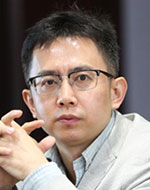 Lingyang Song (S’03-M’06-SM’12-F'19) received his PhD from the University of York, UK, in 2007, where he received the K. M. Stott Prize for excellent research. He worked as a research fellow at the University of Oslo, Norway until rejoining Philips Research UK in March 2008. In May 2009, he joined the School of Electronics Engineering and Computer Science, Peking University, and is now a Boya Distinguished Professor. His main research interests include wireless communications, mobile computing, and machine learning. Dr. Song is the co-author of many awards, including IEEE Leonard G. Abraham Prize in 2016, IEEE ICC 2014, IEEE ICC 2015, IEEE Globecom 2014, and the best demo award in the ACM Mobihoc 2015. He received the National Science Fund for Distinguished Young Scholars in 2017, First Prize in Nature Science Award of the Ministry of Education of China in 2017. Dr. Song has served as an IEEE ComSoc Distinguished Lecturer (2015-2018), an Area Editor of IEEE Transactions on Vehicular Technology (2019-), Co-chair of IEEE Communications Society Asia Pacific Board Technical Affairs Committee (2020-). He is a Clarivate Analytics Highly Cited Researcher.
Lingyang Song (S’03-M’06-SM’12-F'19) received his PhD from the University of York, UK, in 2007, where he received the K. M. Stott Prize for excellent research. He worked as a research fellow at the University of Oslo, Norway until rejoining Philips Research UK in March 2008. In May 2009, he joined the School of Electronics Engineering and Computer Science, Peking University, and is now a Boya Distinguished Professor. His main research interests include wireless communications, mobile computing, and machine learning. Dr. Song is the co-author of many awards, including IEEE Leonard G. Abraham Prize in 2016, IEEE ICC 2014, IEEE ICC 2015, IEEE Globecom 2014, and the best demo award in the ACM Mobihoc 2015. He received the National Science Fund for Distinguished Young Scholars in 2017, First Prize in Nature Science Award of the Ministry of Education of China in 2017. Dr. Song has served as an IEEE ComSoc Distinguished Lecturer (2015-2018), an Area Editor of IEEE Transactions on Vehicular Technology (2019-), Co-chair of IEEE Communications Society Asia Pacific Board Technical Affairs Committee (2020-). He is a Clarivate Analytics Highly Cited Researcher.
TUT-5: Physical Assurance of Electronics for Communications & Networking
Date: Saturday, 08 January 2022
Time: 12:30 - 16:00 (EST)
Abstract: In this tutorial we will focus on the physical inspection methods, attacks, reverse engineering techniques, and counterfeit electronics from the device to system level. With hardware being at the heart of the communication and networking systems, it is paramount to understand it’s security and the vulnerabilities. This tutorial presents how advanced microscopy, failure analysis (FA) techniques combined with image analysis and machine learning can provide assurance to electronics systems and set the stage for secure communication and networking.
The attendees will learn the basic principles of such advanced tools and how they are used for inspection including: invasive, non-invasive, and semi-invasive approaches.
Presenter:
Navid Asadi
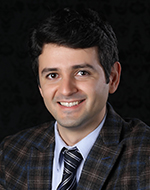 Navid Asadi is an assistant professor in the department of electrical and computer engineering at university of Florida. His research is mainly focused on physical inspection of electronics from device to system level. He investigates novel techniques for integrated circuits counterfeit detection/prevention, system and chip level reverse engineering, anti-reverse engineering, invasive and semi-invasive physical attacks, integrity analysis, etc. using advanced inspection methods including but not limited to 3D X-ray microscopy, Optical imaging, scanning electron microscopy (SEM), focused ion beams (FIBs), THz imaging, etc. in combination with image processing and machine learning algorithms to make the inspection process intelligent and independent from human. He has received several best paper awards and is the co-founder of IEEE-PAINE conference
Navid Asadi is an assistant professor in the department of electrical and computer engineering at university of Florida. His research is mainly focused on physical inspection of electronics from device to system level. He investigates novel techniques for integrated circuits counterfeit detection/prevention, system and chip level reverse engineering, anti-reverse engineering, invasive and semi-invasive physical attacks, integrity analysis, etc. using advanced inspection methods including but not limited to 3D X-ray microscopy, Optical imaging, scanning electron microscopy (SEM), focused ion beams (FIBs), THz imaging, etc. in combination with image processing and machine learning algorithms to make the inspection process intelligent and independent from human. He has received several best paper awards and is the co-founder of IEEE-PAINE conference
TUT-6: Reconfigurable Intelligent Surfaces for Future Wireless Communications
Date: Tuesday, 11 January 2022
Time: 10:00 - 17:30 (EST)
Abstract: As 5G networks take their final form, connectivity demands continue to increase exponentially and new services pose more constraints on the performance that end-users expect. A recent technological breakthrough that holds the potential to meet these demands is that of reconfigurable intelligent surfaces. We believe that a tutorial on the principles and latest approaches of reconfigurable intelligent surfaces for beyond 5G wireless communications will be of great value for both academics and industry practitioners.
Presenters:
Alessio Zappone
Dr. Alessio Zappone obtained his Ph.D. degree in electrical engineering in 2011 from the University of Cassino and Southern Lazio, Cassino, Italy. His Ph.D. studies were focused on distributed algorithms for energy-efficient resource allocation in wireless networks. After obtaining his Ph.D. Alessio has been with the Technische Universitaet Dresden, Germany, managing the project CEMRIN on energy-efficient resource al- location in wireless networks, funded by the German Research Foundation. From 2017 to 2019 he has been the recipient of the H2020 Individual Marie Curie fellowship for experienced researchers BESMART, carried out in the LANEAS group of CentraleSupelec, Paris, France. He is now a tenured professor at the university of Cassino and Southern Lazio, Italy. He received the Marconi Prize paper award of the IEEE communication society with a paper on resource allocation for RIS-based networks. Alessio is an IEEE Senior Member, serves as senior area editor for the IEEE SIGNAL PROCESSING LETTERS and as guest editor for the IEEE JOURNAL ON SELECTED AREAS ON COMMUNICATIONS (Special Issues on Energy-Efficient Techniques for 5G Wireless Communication Systems and on Wireless Networks Empowered by RIS). Alessio is a co-founder and chair of the special interest group “REFLECTIONS”, activated within the Signal Processing and Computing for Communications Technical Committee of the IEEE Communications Society, which focuses on the use of RIS for signal processing and communications. He is also a co-founder and vice-chair of the IEEE emerging technology initiative (ETI) on RIS, activated by the IEEE communication society.
Marco Di Renzo
Dr. Marco Di Renzo (Fellow, IEEE) received the Ph.D. degrees in electrical engineering from the University of L’Aquila, Italy, in 2007. Since 2010, he has been with the French National Center for Scientific Research (CNRS), where he is a CNRS Research Director (CNRS Professor) in the Laboratory of Signals and Systems (L2S) of Paris-Saclay University - CNRS and CentraleSupelec, Paris, France. He served as an Editor and the Associate Editor-in- Chief of IEEE Communications Letters, and as an Editor of IEEE Transactions on Communications and IEEE Transactions on Wireless Communications. Also, he serves as the Founding Chair of the Special Interest Group “RISE” on Reconfigurable Intelligent Surfaces of the Wireless Technical Committee of the IEEE Communications Society, and is the Founding Lead Editor of the IEEE Communications Society Best Readings in Reconfigurable Intelligent Surfaces. In addition, he is a Co- Founder and the Emerging Technology Committee Liaison Officer of the Special Interest Group “REFLECTIONS” on Reconfigurable Intelligent Surfaces of the Signal Processing and Computing for Communications Technical Committee of the IEEE Communications Society and a Co-Founder and the Emerging Technology Committee Liaison Officer of the Emerging Technology Initiative on Reconfigurable Intelligent Surfaces. He is a Highly Cited Researcher (Clarivate Analyt- ics, Web of Science), a World?s Top 2% Scientist from Stan- ford University, a Fellow of IEEE and IET. He has received the IEEE Communications Society Best Young Researcher Award for Europe, Middle East and Africa, the Royal Academy of Engineering Distinguished Visiting Fellowship, the IEEE Jack Neubauer Memorial Best System Paper Award, the IEEE Communications Society Young Professional in Academia Award, the SEE-IEEE Alain Glavieux Award, and a 2019 IEEE ICC Best Paper Award. In 2019, he was a recipient of a Nokia Foundation Visiting Professorship for conducting research on metamaterial-assisted wireless communications at Aalto University, Finland, and in 2021 the Fulbright Fellowship to work on metamaterial-based wireless CUNY Advanced Science Research Center, USA. He received the 2021 EURASIP Best Paper Award for a paper on Reconfigurable Intelligent Surfaces and Smart Radio Environments. Finally, Marco Di Renzo has served as a Guest Editor of several special issues on Reconfigurable Intelligent Surfaces, which include the first Special Issue on the topic published in November 2020 in the IEEE Journal on Selected Areas in Communications, as well as a Guest Editor IEEE Journal on Selected Areas in Signal Processing, IEEE Access, IEEE Wireless Communications Magazine, IEEE Transactions on Cognitive Communications and Networking, IET Communications, China Communica- tions, and a Workshop Organizer on Reconfigurable Intelligent Surfaces at 2020 IEEE GLOBECOM, 2021 IEEE WCNC, and 2021 IEEE ICC. Finally, Marco Di Renzo is the Vice-Chair of the Industry Specification Group on Reconfigurable Intelligent Surfaces within the European Telecommunications Standards Institute.
Merouane Debbah
Dr. Merouane Debbah obtained his Ph.D. from the Ecole Normale Suprieure Paris-Saclay (France). He worked for Motorola (France) from 1999-2002 and Vienna Research Center for Telecommunications (Austria) until 2003. From 2003 to 2007, he joined the Mobile Communications department of Eurecom (France). Since 2007, he is Full Professor at CentraleSupelec (France). Since 2014, he is Vice-President of the Huawei France R&D center and director of the Mathematical and Algorithmic Sciences Lab. He is Associate Editor in Chief of the journal Random Matrix: Theory and Applications and was associate and senior area editor for IEEE Transactions on Signal Processing. He obtained the ERC grant MORE and is IEEE Fellow. He received 19 best paper awards, among which the 2007 IEEE GLOBECOM best paper award, 2014 WCNC best paper award, 2015 ICC best paper award, 2015 IEEE Communications Society Leonard G. Abraham Prize, 2015 IEEE Communications Society Fred W. Ellersick Prize, 2016 IEEE Communications Society Best Tutorial paper award, 2018 IEEE Marconi Prize Paper Award. He received the Mario Boella award in 2005, the IEEE Glavieux Prize Award in 2011 and the Qualcomm Innovation Prize Award in 2012. He is the Industry Liaison officer of the IEEE emerging technology initiative (ETI) on RIS, activated by the IEEE Communications Society.
TUT-7: 6G Security and Privacy Vision Towards Reality
Date: Tuesday, 11 January 2022
Time: 10:00 - 13:30 (EST)
Abstract: Although the fifth-generation wireless networks are yet to be fully investigated, the visionaries of the 6th generation (6G) ecosystem have already come into the discussion. Therefore in order to consolidate and solidify the security and privacy in 6G networks, this tutorial will present how the security may impact on the envisioned 6G wireless systems with the possible challenges and the potential solutions. This tutorial will provide our vision on 6G security with the tentative threat landscape based on the foreseen 6G network architecture. We discuss the security and privacy challenges that may encounter with the available 6G requirements and potential 6G use cases. In particular, the tutorial will discuss the security considerations associated with 6G enabling technologies such as distributed ledger technology (DLT), physical layer security, distributed AI/ML, visible light communication (VLC), THz, and quantum communication. The tutorial will also provide some insights into the standardization efforts and research-level projects relevant to 6G security. To sum up, this tutorial will aim to provide enlightening guidance for subsequent research of 6G security and privacy at this initial phase of vision towards reality.
Presenter:
Madhusanka Liyanage
Madhusanka Liyanage is currently an Assistant Professor/Ad Astra Fellow and Director of Graduate Research at the School of Computer Science, University College Dublin, Ireland. He is also acting as a Docent/Adjunct Professor at the Center for Wireless Communications, University of Oulu, Finland. He received his B.Sc. degree (First Class Honours) in electronics and telecommunication engineering from the University of Moratuwa, Moratuwa, Sri Lanka, in 2009, the M.Eng. degree from the Asian Institute of Technology, Bangkok, Thailand, in 2011, the M.Sc. degree from the University of Nice Sophia Antipolis, Nice, France, in 2011, and the Doctor of Technology degree in communication engineering from the University of Oulu, Oulu, Finland, in 2016. From 2011 to 2012, he worked as a Research Scientist at the I3S Laboratory and Inria, Sophia Antipolis, France. He was also a recipient of the prestigious Marie Skłodowska-Curie Actions Individual Fellowship and Government of Ireland Postdoctoral Fellowship during 2018-2020. During 2015-2018, he has been a Visiting Research Fellow at the CSIRO, Australia, the Infolabs21, Lancaster University, U.K., Computer Science and Engineering, The University of New South Wales, Australia, School of IT, University of Sydney, Australia, LIP6, Sorbonne University, France and Computer Science and Engineering, The University of Oxford, U.K. He is also a senior member of IEEE. In 2020, he received the "2020 IEEE ComSoc Outstanding Young Researcher" award by IEEE ComSoc EMEA. In 2021, he was ranked among the World's Top 2% Scientists (2020) in the List prepared by Elsevier BV, Stanford University, USA. Also, he was awarded an Irish Research Council (IRC) Research Ally Prize as part of the IRC Researcher of the Year 2021 awards for the positive impact he has made as a supervisor.
TUT-8: Distributionally Robust Optimization and Machine Learning for Communication Networks
Date: Tuesday, 11 January 2022
Time: 10:00 - 13:30 (EST)
Abstract: Decision-makers face uncertainties from many aspects, such as the noise in the environment, stochastic events. In order to reduce the risk of uncertainties, it is demanded that the decision-makers can have robust solutions. Distributionally robust optimization provides a new way to utilize limited data samples to make decisions under uncertainty. This tutorial will give a detailed introduction to distributionally robust optimization techniques, including the mathematic foundations and their applications in the wireless communication area. First, this tutorial will briefly explain the decision under uncertainty and the background of the distributionally robust optimization. Second, this tutorial will explain the concept of uncertainty set and how to choose and build up an uncertainty set based on the statistic learning techniques and historical data samples. Third, this tutorial will discuss the discrepancy-based distributionally robust optimization approach with Wasserstein distance. Fourth, this tutorial will discuss the distributionally robust reinforcement learning method, which can make the agent more robust when it makes the decision in a high noise environment. In addition, this tutorial will introduce various communication applications by distributionally robust optimization and distributionally robust machine learning techniques, including ultra-reliable communication, age of information minimization in healthcare IoT, computation offloading in space-air-ground integrated networks, etc. Finally, this tutorial will discuss the conclusions and future work.
Presenters:
Lei Fan
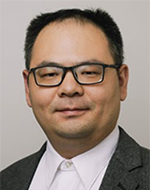 Lei Fan (M’15-SM’20) received the B.S. degree in electrical engineering from the Hefei University of Technology, Hefei, China, in 2009, and the Ph.D. degree in industrial and systems engineering from the University of Florida, Gainesville, FL, USA, in 2015. He was an Application Engineer with General Electric from 2015 to 2017 and a Software Engineer with the Siemens Industry. Currently, He is an assistant professor at the University of Houston. His research interests include the complex system operations and planning, optimization and learning algorithms.
Lei Fan (M’15-SM’20) received the B.S. degree in electrical engineering from the Hefei University of Technology, Hefei, China, in 2009, and the Ph.D. degree in industrial and systems engineering from the University of Florida, Gainesville, FL, USA, in 2015. He was an Application Engineer with General Electric from 2015 to 2017 and a Software Engineer with the Siemens Industry. Currently, He is an assistant professor at the University of Houston. His research interests include the complex system operations and planning, optimization and learning algorithms.
Zhu Han
 Zhu Han (S’01–M’04-SM’09-F’14) received the B.S. degree in electronic engineering from Tsinghua University, in 1997, and the M.S. and Ph.D. degrees in electrical engineering from the University of Maryland, College Park, in 1999 and 2003, respectively. From 2000 to 2002, he was an R&D Engineer of JDSU, Germantown, Maryland. From 2003 to 2006, he was a Research Associate at the University of Maryland. From 2006 to 2008, he was an assistant professor in Boise State University, Idaho. Currently, he is a Professor in Electrical and Computer Engineering Department as well as Computer Science Department at the University of Houston, Texas. His research interests include wireless resource allocation and management, wireless communications and networking, game theory, wireless multimedia, security, and smart grid communication.
Zhu Han (S’01–M’04-SM’09-F’14) received the B.S. degree in electronic engineering from Tsinghua University, in 1997, and the M.S. and Ph.D. degrees in electrical engineering from the University of Maryland, College Park, in 1999 and 2003, respectively. From 2000 to 2002, he was an R&D Engineer of JDSU, Germantown, Maryland. From 2003 to 2006, he was a Research Associate at the University of Maryland. From 2006 to 2008, he was an assistant professor in Boise State University, Idaho. Currently, he is a Professor in Electrical and Computer Engineering Department as well as Computer Science Department at the University of Houston, Texas. His research interests include wireless resource allocation and management, wireless communications and networking, game theory, wireless multimedia, security, and smart grid communication.
Dr. Han received an NSF Career Award in 2010, the Fred W. Ellersick Prize of the IEEE Communication Society in 2011, the EURASIP Best Paper Award for the Journal on Advances in Signal Processing in 2015, the IEEE Kiyo Tomiyasu Award in 2021, and several best paper awards in IEEE conferences. Dr. Han is top 1% highly cited researcher according to Web of Science since 2017, and AAAS fellow since 2019.
TUT-9: Understanding 6G Research & Design Aspects for Ultra-Flexible 6G Core Network Architectures
Date: Tuesday, 11 January 2022
Time: 14:00 - 17:30 (EST)
Abstract:
Keywords: 5G Evolution, RAN-Core Integration, THz, NTN, 6G Core, 6G Data Layer, AI/ML for 6G (if applicable)
6G research is just starting globally and 6G will extend 5G in various domains. This tutorial will provide a holistic overview of what 6G will look like in the future based on outlining potential of new 6G services and deployment visions as well as the current technology drivers for the evolution of 5G, such as Open RAN, Non-Terrestrial Networks (NTNs), campus and non-public networks (NPNs) and AI/ML-based network management, and new disruptive technologies, such as communications in THz frequencies and quantum communications.
A major focal point will be on the design of a flexible 6G core architecture able to glue together the different access and backhaul networking technologies for supporting the many divergent 6G application domains including the new mobile and nomadic deployments and global distributed local campus networks.
The globally recognized Fraunhofer FOKUS Open5GCore toolkit (www.open5GCore.org) will be used as an example on how 6G research could be enabled by existing open networking toolkits and how hands-on practical implementations enable to pin-point potential developments, underline potential technologies and the speakers will illustrate the research roadmap towards realizing a 6G-ready Core Network toolkit in current 6G research projects.
The tutorial contents is based on the first results and experiences gained within the Fraunhofer 6G Flagship Project “6G Sentinel” (See https://www.iis.fraunhofer.de/en/ff/kom/mobile-kom/6g-sentinel.html) which started in the beginning of 2021, as well as the two German BMBF 6G Hubs “Open6GHub” and “6G-RIC”, in which Fraunhofer FOKUS is responsible for designing and developing a set of network control plane for a highly flexible and resilient core network for prototyping innovative 6G infrastructures, inspired by the current discussions on RAN-Core convergence and network function disaggregation motivated by Open RAN.
More information can also be found at the website www.6G-ready.org on use cases and technology directions to be presented.
Presenters:
Thomas Magedanz
 Thomas Magedanz (PhD) has been professor at the Technische Universität Berlin, Germany, leading the chair for next generation networks (www.av.tu-berlin.de) since 2004. In addition, since 2003 he has been Director of the Business Unit Software-based Networks (NGNI) at the Fraunhofer Institute for Open Communication Systems FOKUS (www.fokus.fraunhofer.de/go/ngni) in Berlin. For 33 years Prof. Magedanz has been a globally recognized ICT expert, working in the convergence field of telecommunications, Internet and information technologies understanding both the technology domains and the international market demands. His interest is in software-based networks for different verticals, with a strong focus on public and non-public campus networks. His current interest is in the evolution from 5G to 6G. For more details look here: http://www.av.tu-berlin.de/menue/team/prof_dr_thomas_magedanz/
Thomas Magedanz (PhD) has been professor at the Technische Universität Berlin, Germany, leading the chair for next generation networks (www.av.tu-berlin.de) since 2004. In addition, since 2003 he has been Director of the Business Unit Software-based Networks (NGNI) at the Fraunhofer Institute for Open Communication Systems FOKUS (www.fokus.fraunhofer.de/go/ngni) in Berlin. For 33 years Prof. Magedanz has been a globally recognized ICT expert, working in the convergence field of telecommunications, Internet and information technologies understanding both the technology domains and the international market demands. His interest is in software-based networks for different verticals, with a strong focus on public and non-public campus networks. His current interest is in the evolution from 5G to 6G. For more details look here: http://www.av.tu-berlin.de/menue/team/prof_dr_thomas_magedanz/
Marius Corici
 Marius Corici (Dr. Eng.) is a senior researcher at the Fraunhofer FOKUS Institute. He has received his Diploma-Engineer degree at the ― Politehnica University of Bucharest on Nomadic Satellite-Based VoIP Infrastructure. He joined the Next Generation Network Infrastructures (NGNI) competence center of Fraunhofer FOKUS Institute, now renamed as Software-based Networks Division. He has received his Doctoral Degree in 2013 on Self-Adaptable IP Control in Carrier Grade Mobile Operator Networks. Currently, he is the deputy head of the Software-based Networks business direction of Fraunhofer, leading the research and development teams for the Open5GCore (www.open5GCore.org) and NEMI (www.nemi-project.org) toolkits and acting as a research pathfinder for the evolution towards vertical sectors and customization of massive core networks as well as the design and specification of novel beyond-5G features and 6G architectures. Furthermore, Marius Corici is acting as researcher at the Technische Universität Berlin and preparing the lectures on 5G as part of the department next generation networks (Architekturen der Vermittlungsknoten – AV) (www.av.tu-berlin.de).
Marius Corici (Dr. Eng.) is a senior researcher at the Fraunhofer FOKUS Institute. He has received his Diploma-Engineer degree at the ― Politehnica University of Bucharest on Nomadic Satellite-Based VoIP Infrastructure. He joined the Next Generation Network Infrastructures (NGNI) competence center of Fraunhofer FOKUS Institute, now renamed as Software-based Networks Division. He has received his Doctoral Degree in 2013 on Self-Adaptable IP Control in Carrier Grade Mobile Operator Networks. Currently, he is the deputy head of the Software-based Networks business direction of Fraunhofer, leading the research and development teams for the Open5GCore (www.open5GCore.org) and NEMI (www.nemi-project.org) toolkits and acting as a research pathfinder for the evolution towards vertical sectors and customization of massive core networks as well as the design and specification of novel beyond-5G features and 6G architectures. Furthermore, Marius Corici is acting as researcher at the Technische Universität Berlin and preparing the lectures on 5G as part of the department next generation networks (Architekturen der Vermittlungsknoten – AV) (www.av.tu-berlin.de).


